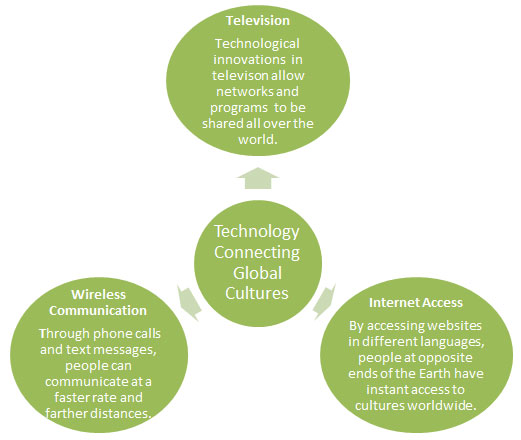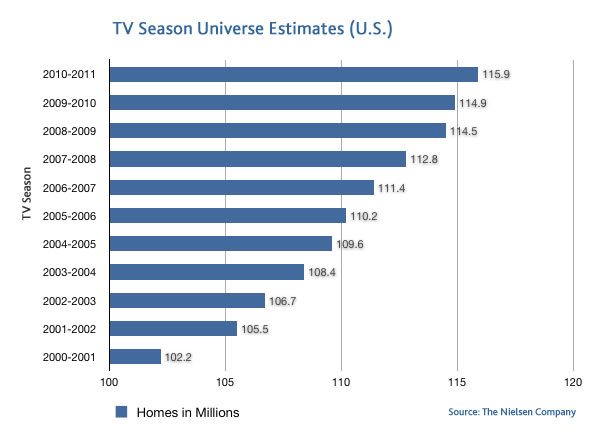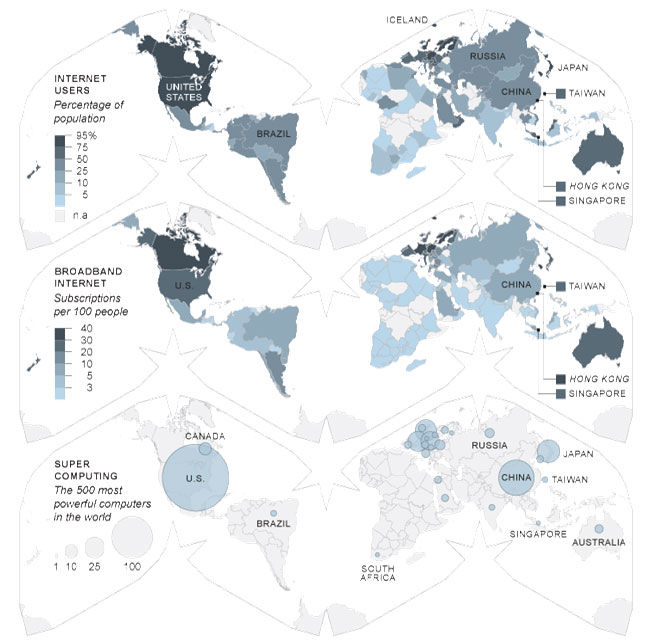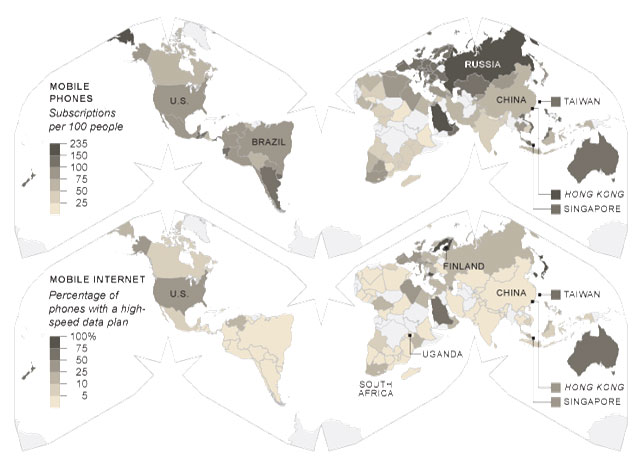

The use of technology is becoming more common in our global culture. As globalization continues to bring the world’s cultures closer together, technology has become essential in making the necessary connections to do so.
Technology that connects the world comes in different forms. Read the information below to learn more.

→ Think about this: Which of the three forms of technology above do you use most frequently? How frequent is your use – hourly, daily, weekly?
Let’s take a closer look at these forms of technology and their impact on the world’s culture.
Watching television is a popular custom worldwide. It has become the most popular leisure activity in most developed societies throughout the world. Television can be used to access news and entertainment worldwide. There are some countries where there is very little access to television (in Asia or Africa) or where access to television programming is limited by the government.
According to research by The Nielsen Company, a consumer marketing company, in 2011, there were 115.9 million TV households in the United States, which represents nearly 300 million people with televisions in their homes. Survey the growth of televisions in American households.

Chances are you are a part of the 115.9 million TV households in the United States illustrated in the graph, which means you may be familiar with the type of programming offered in the United States. With recent innovations in technology, such as satellite and Internet-based television, a viewer in Europe can access American programming.
![]() Look at the map below and click on each of the stars representing various countries around the world (Haiti, Saudi Arabia, and Russia). The links will lead you to a clip of television programming from each of the countries. Answer the questions that follow.
Look at the map below and click on each of the stars representing various countries around the world (Haiti, Saudi Arabia, and Russia). The links will lead you to a clip of television programming from each of the countries. Answer the questions that follow.
Quick reflection: In your opinion, do these television programming clips represent cultural convergence (when cultures come in contact with one another and interact influencing and being influenced by each other) or cultural divergence (when a culture group disassociates from other cultures in order to protect or preserve their culture from influence or change)? What evidence from the clips support your answers?
Within the last four decades, the Internet has spread throughout much of the world. Now, the focus is on the speed of the Internet and the shift to broadband services with high-bandwidth connectivity. There is also a new focus on the global availability of supercomputers.

After carefully analyzing the maps above, answer the following questions.
Interactive popup. Assistance may be required.
Africa has the smallest percentage of Internet users in the world. While Internet use is on the rise in Africa due to improvements in the infrastructure and the increase in wireless access technologies, it remains the region with the lowest usage.
Interactive popup. Assistance may be required.
North America has the largest percentage of Internet users in the world. Based on the map, 95 percent or more of the population in both the United States and Canada use the Internet. In Mexico, nearly 75 percent of the population uses the Internet.
Interactive popup. Assistance may be required.
Canada has more high speed Internet subscribers. At least 40 Canadians out of 100 subscribe to high speed Internet, while 30 Americans out of 100 subscribe to high speed Internet.
Interactive popup. Assistance may be required.
The United States has the most supercomputers in the world. Countries in Africa have far fewer than the United States. Several countries in Asia have supercomputers, but the total of of all Asian supercomputers is less than the number in the United States. There are more countries in Europe with supercomputers, but the amount is less than that of the United States.
Cell phones are rapidly increasing in much of the developing world. The use of smartphones and other Internet-connected devices is overall currently low, but it is predicted to rise quickly in countries like China, which will soon have the world’s largest market for Internet commerce and computing.
The top part of the map below illustrates the number of people (per 100) that own a cell phone. Related to that information, the lower part of the map illustrates the percentage of those phones with high speed Internet.

Based on the series of maps above, it can be concluded that technology is not globally balanced. The more developed a country is, the more access to technology it has. There are concerns that some countries with limited access, like those in Africa and Asia, may get left behind in this global Information Age.
The United Nations targeted this disparity in the Millennium Development Goals (MDG); a set of goals agreed upon by all of the world’s countries to meet the needs of the world’s poorest by 2015.
More information about the Millennium Development Goals can be found here.
One of the many Millennium Development Goals targets reads as follows:
Target 8.F:
In cooperation with the private sector, make available the benefits of new technologies, especially information and communications.
This target states that the United Nations, along with those in the business world, will increase information and communication through the access to new technology.
![]() Watch this video to see how the United Nations is addressing the need to increase access to new technology.
Watch this video to see how the United Nations is addressing the need to increase access to new technology.
Source: UNICEF, Free text message programme goes live in Nepal, You Tube
→ Quick Thought: How is the initiative of free text messaging addressing the specific targets of the MDGs? Why do you think it is important to the youth in Nepal?
The data below describes the progress made toward the 2015 goal.
Source: Millennium Development Goal Programme, www.un.org
→ Quick Reflection: Do you think that progress has been made in meeting the target of making new technology available to all? What examples support your answer?
![]() Read the following statistics from the United Nations’ Information and Communication Technology (ICT) Report, and determine if it represents cultural convergence or cultural divergence in global technology. Click on the correct answer.
Read the following statistics from the United Nations’ Information and Communication Technology (ICT) Report, and determine if it represents cultural convergence or cultural divergence in global technology. Click on the correct answer.
Sources of images and videos used in this section as they appear, top to bottom: